Virtual Westercon 74

 There’s not much I can say about this convention, partly because Kevin chaired it, and partly because I didn’t attend in person. However, there are a few things worth talking about.
There’s not much I can say about this convention, partly because Kevin chaired it, and partly because I didn’t attend in person. However, there are a few things worth talking about.
The first is that travelling conventions are not doing well. In the UK, FantasyCon was cancelled because the original organisers were looking at a £24,000 loss. Then it was relaunched as a 2-day event with no dealers’ room (and possibly no art show). Hopefully it will go OK, but there’s a real sense that, despite all of the “great to be back to normal” sentiment we saw at Eastercon, people are still nervous of going to conventions.
Westercon is a convention that travels up and down the west coast of the USA. It has been on hiatus due to the pandemic, and this was the first year back. Due, in part, to a lack of quality bidders from major cities, this year’s event was to take place in Tonopah, Nevada. The town is interesting, being a former silver mining centre, and therefore having a wild west feel to it. The con ran with that theme, billing itself as a “Wild, Wild Westercon”. Also the convention center is small, friendly and entirely non-rapacious in its pricing, which is highly unusual for convention locations.
On the downside, Tonopah is 200 miles from the nearest airports (Reno and Las Vegas). And the USA is very much in the throes of an aggressive wave of infections. A whole lot of Westercon regulars apparently decided that because this wasn’t a traditional event the convention should be cancelled forever. And BayCon, the Bay Area’s annual convention, appears to have decided that Westercon is already dead, and have moved their traditional dates from Memorial Day weekend to 4th July weekend, therefore competing with Westercon.
As it turns out, people have come forward to offer to run Westercon for the next two years. The next one will be in Anaheim, which is very much a major venue. So maybe it isn’t dead after all. But I got the impression that the attendance at Tonopah had a very high average age. I hope next year’s committee manages to appeal to a younger crowd.
(It is also possible, knowing Bay Area fan politics, that BayCon will move back to Memorial Day next year because the Westercon is being run by other people.)
Knowing that it would be difficult to attract people to Tonopah, Kevin and I decided from the get-go that we needed to do some online programming. The programming team that Kevin recruited (led by Arlene Busby and Michelle Weisblat-Dane) was on board and wanted to do hybrid as well. So I got the job of putting together a small stream of virtual programming featuring guests from outside North America.
We didn’t get a huge number of online attendees, but I think we did a decent job. I’m particularly pleased that we had a bunch of non-white, non-Anglo programme participants. One of the highlights was a panel on Arabic SF&F featuring speakers from Saudi Arabia, the UAE and Palestine. I know that Michelle recorded the panels, and hopefully some of them will be available online soon.
Of course we were not immune from last-minute panics. I’d like to give special thanks to the following:
- To J Dianne Dotson for being an Emergency Holographic Gareth Powell when Gareth went down with COVID at the start of the con;
- To Gareth for turning up and doing a panel two days later despite being still very sick;
- To Lauren Beukes for finding me a stand-in when she had to drop out at the last minute; and
- To Wole Talabi for being absolutely brilliant in that stand-in role.
The point is that adding a virtual track to an existing convention is not hard. There aren’t a lot of resources required. And having one means that even a fairly small event can have high profile programme participants (we had Mike Carey and Ken MacLeod) and a much more diverse selection of panelists than would otherwise be the case.
We gave all of our supporting members access to the virtual programme. For any convention that has supporting members, this is a great way to add value to that membership type.
And, of course, virtual programming makes the convention accessible to people who, for a variety of reasons, are unable to travel.
Every convention should be doing it.

 Well that was absolutely delightful.
Well that was absolutely delightful.
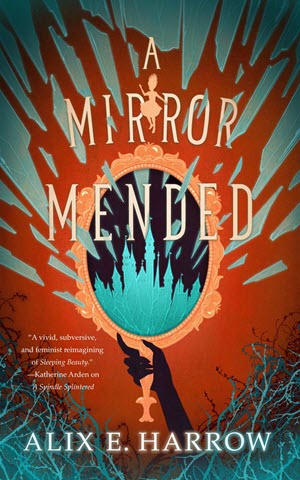 Alix Harrow’s A Spindle Splintered was one of the stand-out novellas of last year. The new book follows the same lead character, Zinna Gray, and tries to wring something else out of the idea. There are, after all, issues to be addressed. Key amongst them is the problem of “happy ever after”. As Zinnia herself points out at the start of the book, this is actually a contraction. The original traditional ending of fairy stories was that everyone was “happy in the ever after”, i.e. in Heaven. Real happy ever after doesn’t happen in the mortal world, because life happens.
Alix Harrow’s A Spindle Splintered was one of the stand-out novellas of last year. The new book follows the same lead character, Zinna Gray, and tries to wring something else out of the idea. There are, after all, issues to be addressed. Key amongst them is the problem of “happy ever after”. As Zinnia herself points out at the start of the book, this is actually a contraction. The original traditional ending of fairy stories was that everyone was “happy in the ever after”, i.e. in Heaven. Real happy ever after doesn’t happen in the mortal world, because life happens.

 It has been a long time in coming, but Finncon is back in person again. The last in-person event was 2019 in Jyväskylä (where I was a Guest of Honour). We’ve all missed it. So how is the convention shaping up to the post-lockdown era?
It has been a long time in coming, but Finncon is back in person again. The last in-person event was 2019 in Jyväskylä (where I was a Guest of Honour). We’ve all missed it. So how is the convention shaping up to the post-lockdown era?
 A provisional agenda for this year’s WSFS Business Meeting has been released. You can find it
A provisional agenda for this year’s WSFS Business Meeting has been released. You can find it 

 This is the June 2022 issue of Salon Futura. Here are the contents.
This is the June 2022 issue of Salon Futura. Here are the contents. All the Seas of the World
All the Seas of the World Wrath Goddess Sing
Wrath Goddess Sing Of Charms, Ghosts and Grievances
Of Charms, Ghosts and Grievances On Reviewing and Taxonomies
On Reviewing and Taxonomies The Matrix Resurrections
The Matrix Resurrections Doctor Who Redacted
Doctor Who Redacted Across the Green Grass Fields
Across the Green Grass Fields The Mab
The Mab Moon Knight
Moon Knight Editorial – June 2022
Editorial – June 2022 This month’s cover is by
This month’s cover is by 
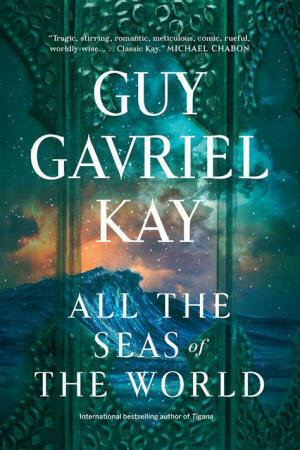 There are not many authors for whom I can say, “anything they write I will buy and read immediately.” Some authors that I am a huge fan of don’t always produce the sort of books I want to read. That’s because they have a fairly wide range of authorly interests. Other authors are much more predictable. That’s definitely the case with Guy Gavriel Kay. I know what sort of book I will get from him, and I know I will love it.
There are not many authors for whom I can say, “anything they write I will buy and read immediately.” Some authors that I am a huge fan of don’t always produce the sort of books I want to read. That’s because they have a fairly wide range of authorly interests. Other authors are much more predictable. That’s definitely the case with Guy Gavriel Kay. I know what sort of book I will get from him, and I know I will love it.
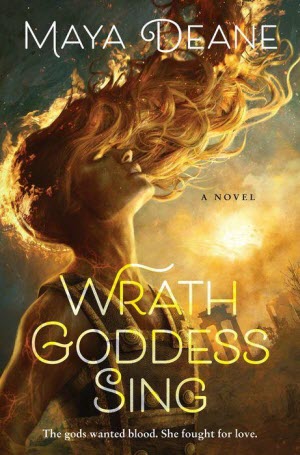 There are some writers who are so good at what they do that I would give an awful lot to be able to write like them. (Guy Kay is one of them. Cat Valente, obviously, is another.) But I wouldn’t necessarily write the sort of books that they write. Wrath Goddess Sing by Maya Deane is the sort of book that I wish I could have written, and would have written if I had been good enough and brave enough.
There are some writers who are so good at what they do that I would give an awful lot to be able to write like them. (Guy Kay is one of them. Cat Valente, obviously, is another.) But I wouldn’t necessarily write the sort of books that they write. Wrath Goddess Sing by Maya Deane is the sort of book that I wish I could have written, and would have written if I had been good enough and brave enough.

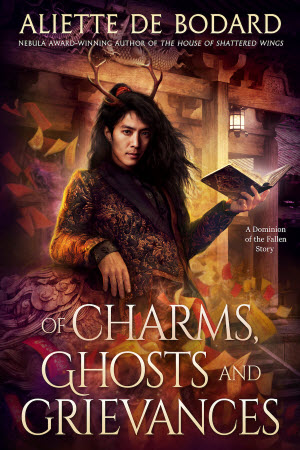 I was talking elsewhere about authors whose books I buy and read as soon as they came out. Aliette de Bodard has made her way into those ranks. With a full time job, and raising two kids on her own, she’s mostly producing short fiction these days, but it is glorious stuff.
I was talking elsewhere about authors whose books I buy and read as soon as they came out. Aliette de Bodard has made her way into those ranks. With a full time job, and raising two kids on her own, she’s mostly producing short fiction these days, but it is glorious stuff.
 Back in February, Paul Kincaid published
Back in February, Paul Kincaid published  The fourth Matrix film was apparently a disaster at the box office, and received a thorough panning from many critics. As a result it took me a while to get around to watching it, but I’m glad I did because there’s a lot to think about.
The fourth Matrix film was apparently a disaster at the box office, and received a thorough panning from many critics. As a result it took me a while to get around to watching it, but I’m glad I did because there’s a lot to think about. I’m not a big fan of audio drama. I tend to have difficulty in following what is going on. I’m also not a huge fan of Doctor Who. In particular I found the Moffat era unwatchable. But my Twitter feed has been full of excitement over a Doctor Who audio drama with a lot of queer content, so I figured I should give it is a try. Folks, it is very good. It is also guaranteed to get up the noses of the Dudebros. This is excellent.
I’m not a big fan of audio drama. I tend to have difficulty in following what is going on. I’m also not a huge fan of Doctor Who. In particular I found the Moffat era unwatchable. But my Twitter feed has been full of excitement over a Doctor Who audio drama with a lot of queer content, so I figured I should give it is a try. Folks, it is very good. It is also guaranteed to get up the noses of the Dudebros. This is excellent. Another piece of Hugo reading done. This is the one novella from this year’s ballot that I hadn’t read. It is, of course, another book in Seanan McGuire’s Wayward Children series. This one is not set in Eleanor West’s school, and it works pretty well as a stand-alone.
Another piece of Hugo reading done. This is the one novella from this year’s ballot that I hadn’t read. It is, of course, another book in Seanan McGuire’s Wayward Children series. This one is not set in Eleanor West’s school, and it works pretty well as a stand-alone.

 Most of you will probably have heard of The Mabinogion. For those who haven’t, it is a compilation of mythological tales written in Middle Welsh. Some of the stories feature King Arthur. Lloyd Alexander’s The Chronicles of Prydain series is loosely based on some of the tales in The Mabinogion.
Most of you will probably have heard of The Mabinogion. For those who haven’t, it is a compilation of mythological tales written in Middle Welsh. Some of the stories feature King Arthur. Lloyd Alexander’s The Chronicles of Prydain series is loosely based on some of the tales in The Mabinogion.
 I was hoping to have some expert Egyptological input before writing this, but I can’t wait too long or I will have forgotten what I saw, so here goes with the weird guy in mummy bandages.
I was hoping to have some expert Egyptological input before writing this, but I can’t wait too long or I will have forgotten what I saw, so here goes with the weird guy in mummy bandages.
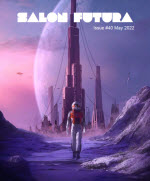 This is the May 2022 issue of Salon Futura. Here are the contents.
This is the May 2022 issue of Salon Futura. Here are the contents. Kingfisher
Kingfisher Aspects
Aspects Plutoshine
Plutoshine Dreams Bigger Than Heartbreak
Dreams Bigger Than Heartbreak Kundo Wakes Up
Kundo Wakes Up Åcon XI
Åcon XI Star Trek: Prodigy
Star Trek: Prodigy Picard – Season 2
Picard – Season 2 This issue’s cover is again from
This issue’s cover is again from 
 As many of you know, Patricia McKillip died recently. My little corner of the internet has been full of tributes to her, including a
As many of you know, Patricia McKillip died recently. My little corner of the internet has been full of tributes to her, including a 
 Most of you will, I suspect, know that this book is unfinished. What I hadn’t quite twigged before starting it, is that it is not just an unfinished novel, it is an unfinished fantasy series. No one knows how many books John M Ford had planned before his untimely death in 2006, but it was clearly more than one.
Most of you will, I suspect, know that this book is unfinished. What I hadn’t quite twigged before starting it, is that it is not just an unfinished novel, it is an unfinished fantasy series. No one knows how many books John M Ford had planned before his untimely death in 2006, but it was clearly more than one.
 Last month I featured a review of a debut novel from a woman writer fresh out of university that I found very impressive. Now I have another one, equally impressive, but very different.
Last month I featured a review of a debut novel from a woman writer fresh out of university that I found very impressive. Now I have another one, equally impressive, but very different.
 I don’t read a lot of YA, but I’d be happy to bet that Charlie Jane Anders’ Unstoppable series is not typical. It is not just about teenagers. It is about mostly queer teenagers.
I don’t read a lot of YA, but I’d be happy to bet that Charlie Jane Anders’ Unstoppable series is not typical. It is not just about teenagers. It is about mostly queer teenagers.
 Kundo Wakes Up is the latest in a series of books, mostly novellas, by Saad Z Hossain, who is fast becoming one of my favourite writers. They are essentially cyberpunk, but set in a near future South Asia which manages to be a much better setting for such tales than Seattle. They also have djinn. Everything is better with djinn, it seems.
Kundo Wakes Up is the latest in a series of books, mostly novellas, by Saad Z Hossain, who is fast becoming one of my favourite writers. They are essentially cyberpunk, but set in a near future South Asia which manages to be a much better setting for such tales than Seattle. They also have djinn. Everything is better with djinn, it seems.
 It has been a long time. The last Åcon was in 2019. But finally Nordic fandom has been able to gather in Mariehamn once more, joined as usual by a few folks from further afield.
It has been a long time. The last Åcon was in 2019. But finally Nordic fandom has been able to gather in Mariehamn once more, joined as usual by a few folks from further afield.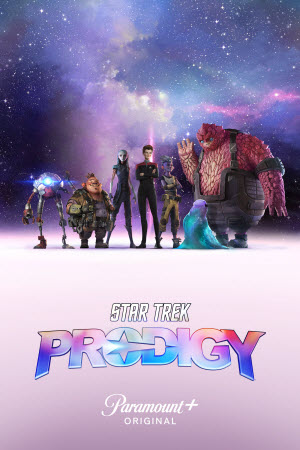 We don’t yet have Paramount + here in the UK, and anyway I’m ambivalent about paying for a streaming service just to watch Star Trek. I can’t think of anything else they offer that I’d want to watch. So I’d kind of resigned myself to not seeing Prodigy. But then I discovered that it is on Nickleodeon, and I have that channel as part of my Sky subscription, so I promptly binged the first season.
We don’t yet have Paramount + here in the UK, and anyway I’m ambivalent about paying for a streaming service just to watch Star Trek. I can’t think of anything else they offer that I’d want to watch. So I’d kind of resigned myself to not seeing Prodigy. But then I discovered that it is on Nickleodeon, and I have that channel as part of my Sky subscription, so I promptly binged the first season. Jean Luc Picard has many, many loyal fans, and Paramount seems determined to milk them for all they are worth. This means re-visiting themes from the original Next Generation series. In the first season of Picard, that meant Data and related artificial beings. In this one it means mainly the Borg, whom we are supposed to have got rid of, and Q, whom sadly we haven’t.
Jean Luc Picard has many, many loyal fans, and Paramount seems determined to milk them for all they are worth. This means re-visiting themes from the original Next Generation series. In the first season of Picard, that meant Data and related artificial beings. In this one it means mainly the Borg, whom we are supposed to have got rid of, and Q, whom sadly we haven’t.
 This is the April 2022 issue of Salon Futura. Here are the contents.
This is the April 2022 issue of Salon Futura. Here are the contents. A Psalm for the Wild-Built
A Psalm for the Wild-Built Bluebird
Bluebird StarHenge
StarHenge Midnight Doorways
Midnight Doorways The White Room
The White Room Rosebud
Rosebud Eastercon 2022
Eastercon 2022 Spiderman – No Way Home
Spiderman – No Way Home Story Matrices
Story Matrices Star Trek: Discovery – Season 4
Star Trek: Discovery – Season 4 This issue’s cover uses a piece of art that Liam Sharp has been using to promote his StarHenge comic. It shows a Mor-Dreadnaught of The Cast, who are the villains of the story. I cheekily asked Liam if he’d mind me using it, and he said yes. Huge thanks are appropriate. An undulterated version of the art is available below.
This issue’s cover uses a piece of art that Liam Sharp has been using to promote his StarHenge comic. It shows a Mor-Dreadnaught of The Cast, who are the villains of the story. I cheekily asked Liam if he’d mind me using it, and he said yes. Huge thanks are appropriate. An undulterated version of the art is available below.
 It is Hugo reading time, and that means catching up with Becky Chambers. It is easy to see why she is so popular. Her prose is effortlessly readable and deeply caring. But this can mask the amount of thought that she puts into her work.
It is Hugo reading time, and that means catching up with Becky Chambers. It is easy to see why she is so popular. Her prose is effortlessly readable and deeply caring. But this can mask the amount of thought that she puts into her work.
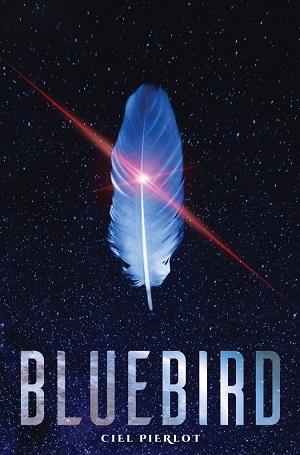 Did someone say, “lesbian space pirate”? I’m in.
Did someone say, “lesbian space pirate”? I’m in.
 Sometimes in this business you meet someone and can see immediately that they have huge amounts of talent and are going to do very well for themselves. In my case one such person was Liam Sharp. I could see that he had a fine career as an artist in front of him, and I was right. He’s currently having a bumper year. He’s had a hugely successful Kickstarter campaign for an art book, and now he is starting that holy grail of all comics people, a creator-owned title.
Sometimes in this business you meet someone and can see immediately that they have huge amounts of talent and are going to do very well for themselves. In my case one such person was Liam Sharp. I could see that he had a fine career as an artist in front of him, and I was right. He’s currently having a bumper year. He’s had a hugely successful Kickstarter campaign for an art book, and now he is starting that holy grail of all comics people, a creator-owned title. While the level of diversity in mainstream publishing has improved quite a bit of late, it is still hard for writers of colour who do not live in the Anglosphere to get their work considered. Often what they have to do is publish locally and hope that their book gets some attention, and is then picked up by a bigger publisher. Examples of this are Samit Basu’s Chosen Spirits, which will be re-published as The City Inside by Tot.com in June, and Lavanya Lakshminarayan’s Analog/Virtual, which will be republished as The Ten Percent Thief by Solaris next year. I am hoping that something similar will happen with Usman T Malik’s Midnight Doorways.
While the level of diversity in mainstream publishing has improved quite a bit of late, it is still hard for writers of colour who do not live in the Anglosphere to get their work considered. Often what they have to do is publish locally and hope that their book gets some attention, and is then picked up by a bigger publisher. Examples of this are Samit Basu’s Chosen Spirits, which will be re-published as The City Inside by Tot.com in June, and Lavanya Lakshminarayan’s Analog/Virtual, which will be republished as The Ten Percent Thief by Solaris next year. I am hoping that something similar will happen with Usman T Malik’s Midnight Doorways.
 If you want to know the things we see
If you want to know the things we see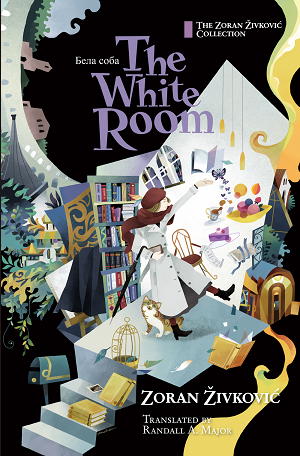
 This is another book that I can’t give a proper review of, because I did a brief bit of consultancy work on it. My name is right there in the acknowledgements. But I did love the book when I first read it, and consequently want to tell you about it.
This is another book that I can’t give a proper review of, because I did a brief bit of consultancy work on it. My name is right there in the acknowledgements. But I did love the book when I first read it, and consequently want to tell you about it.
 As experiments go, this was one part encouraging and one part rather scary. Let’s start with the good stuff.
As experiments go, this was one part encouraging and one part rather scary. Let’s start with the good stuff. Well that wasn’t as bad as I expected. I’d been all primed to absolutely hate this movie. Into the SpiderVerse is by far my favourite Spiderman movie, and I had heard that No Way Home steals much of the plot of that. To a certain extent it does, and of course it does it badly because all of the spiderpeople it brings in from across the multiverse are Peter Parker, which is very boring in comparison. However, there’s a reason why the new film is the way it is.
Well that wasn’t as bad as I expected. I’d been all primed to absolutely hate this movie. Into the SpiderVerse is by far my favourite Spiderman movie, and I had heard that No Way Home steals much of the plot of that. To a certain extent it does, and of course it does it badly because all of the spiderpeople it brings in from across the multiverse are Peter Parker, which is very boring in comparison. However, there’s a reason why the new film is the way it is.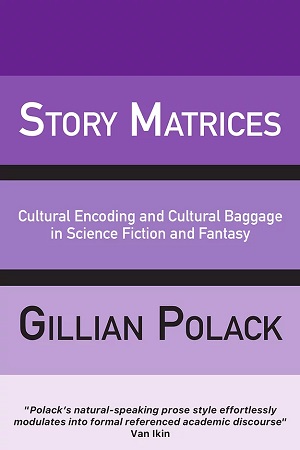 The full title of this book is Story Matrices: Cultural Encoding and Cultural Baggage in Science Fiction and Fantasy, because it is an academic work and therefore must have a colon somewhere. However, don’t let that put you off, because Gillian Polack tries hard to make her work accessible, and the book is published by Luna Press so it does not cost three years’ wages to buy.
The full title of this book is Story Matrices: Cultural Encoding and Cultural Baggage in Science Fiction and Fantasy, because it is an academic work and therefore must have a colon somewhere. However, don’t let that put you off, because Gillian Polack tries hard to make her work accessible, and the book is published by Luna Press so it does not cost three years’ wages to buy.